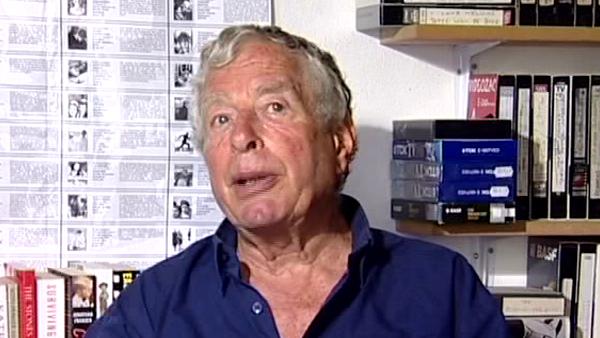NEXT STORY

Saturday Night: Problems with sound recording
RELATED STORIES

NEXT STORY

Saturday Night: Problems with sound recording
RELATED STORIES


|
Views | Duration | |
|---|---|---|---|
| 21. Richard Massingham | 80 | 01:13 | |
| 22. What a Life | 73 | 01:08 | |
| 23. Getting fired twice | 101 | 03:48 | |
| 24. Forming Screen Craft | 78 | 03:04 | |
| 25. Saturday Night: Problems with sound recording | 68 | 04:57 | |
| 26. Saturday Night: Shooting | 55 | 05:10 | |
| 27. Saturday Night: The last scene and the Unity Theatre | 44 | 02:21 | |
| 28. Watching Saturday Night 50 years on | 59 | 03:18 | |
| 29. Working for Basic Films | 54 | 04:19 | |
| 30. Going to the World Youth Festival | 67 | 06:23 |


So when Smith Our Friend had a measure of success, which was all one could expect, we were quite happy, but we wanted to go on to bigger and better things. So we decided to form a semi-professional film unit, which was called Screen Craft and which we... where we found some 12 or 15 people who were interested and who were prepared to contribute £5 each to the kitty for the making of this film. And £5 at that time was a considerable sum of money. It was about two weeks' salary for me in the jobs I had prior to being a clapper boy. So Derek wrote a new script, which was again about... well, it was about a young bloke who is at a bit of a loose end, he doesn't really know what he wants, what he wants to do with his life. First of all we see him sitting in his bed-sitting room somewhere, sort of looking out the window and pacing about and musing generally, and no dialogue. Then he goes out and he has a series of encounters, which is sort of symbolic, you could say, I suppose. It's a very romantic film and very naïve and very young, made by very naïve people. So he meets an army recruiting poster, a prostitute and a beautiful young girl, in that order. The film was designed initially to run 20 minutes. And then we decided to extend it before we had hardly started... when we'd just started filming, because the filming went on in sections every now and then when we were all free, at weekends, but with big intervals in between. And, soon... quite soon after we started we decided to extend it from 20 minutes to just over 33 minutes, because that was a barrier... that was a limit. If a film was over 33 minutes long, it qualified for quota as a featurette, so you had a, kind of, guaranteed entry into the cinemas because the owners got some money back. There was a thing called the Eady Scheme which, under certain conditions the theatre owners could get a refund. So we decided to lengthen it to 33 minutes and we added two scenes, both quite lengthy. Well, together they were something like 13 or 14 minutes long. One was a scene in a public library and the other was a scene at an outdoor political meeting, where somebody is standing on a soapbox and going on about things. And both those things... both those scenes were predominantly dialogue scenes, whereas the rest of the film, for various reasons, was largely without dialogue.
Born in Germany, cinematographer Walter Lassally (1926-2017) was best known for his Oscar-winning work on 'Zorba the Greek'. He was greatly respected in the film industry for his ability to take the best of his work in one area and apply it to another, from mainstream to international art films to documentary. He was associated with the Free Cinema movement in the 1950s, and the British New Wave in the early 1960s. In 1987 he published his autobiography called 'Itinerant Cameraman'.
Title: Forming Screen Craft
Listeners: Peter Bowen
Peter Bowen is a Canadian who came to Europe to study and never got round to heading back home. He did his undergraduate work at Carleton University (in Biology) in Ottawa, and then did graduate work at the University of Western Ontario (in Zoology). After completing his doctorate at Oxford (in the Department of Zoology), followed with a year of postdoc at the University of London, he moved to the University's newly-established Audio-Visual Centre (under the direction of Michael Clarke) where he spent four years in production (of primarily science programs) and began to teach film. In 1974 Bowden became Director of the new Audio-Visual Centre at the University of Warwick, which was then in the process of introducing film studies into the curriculum and where his interest in the academic study of film was promoted and encouraged by scholars such as Victor Perkins, Robin Wood, and Richard Dyer. In 1983, his partner and he moved to Greece, and the following year he began to teach for the University of Maryland (European Division), for which he has taught (and continues to teach) biology and film courses in Crete, Bosnia, and the Middle East.
Tags: film, screen, script, cinema, romantic
Duration: 3 minutes, 5 seconds
Date story recorded: June 2004
Date story went live: 24 January 2008